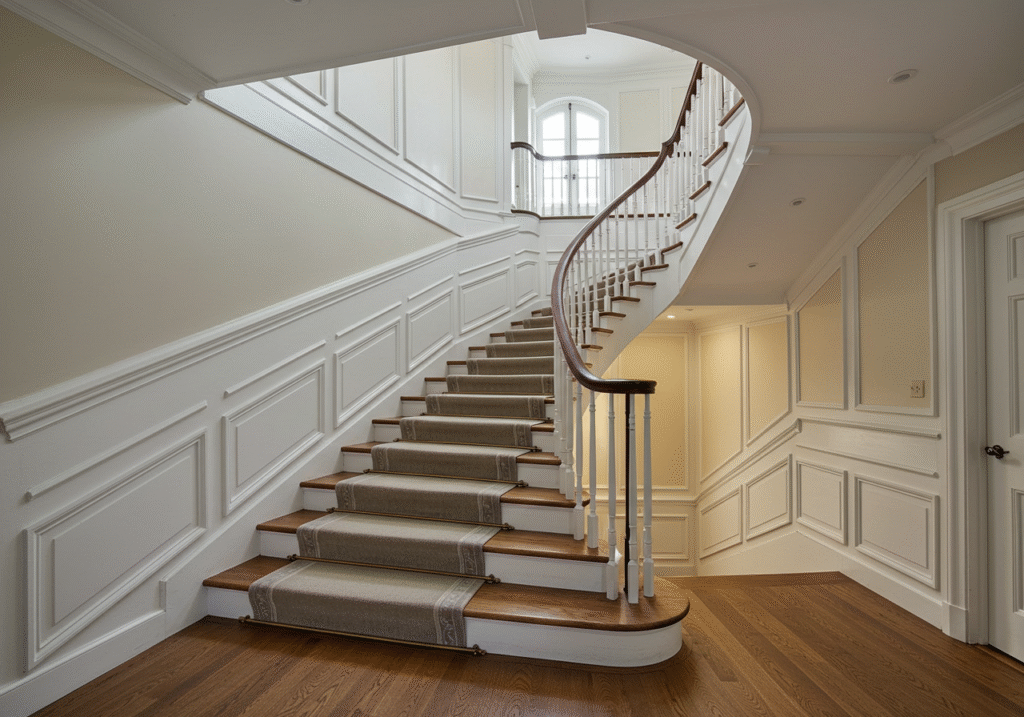Transform your staircase into a stunning focal point with wainscoting! This timeless design technique adds elegance, durability, and character to stairways, making it a popular choice for homeowners seeking to elevate their interiors. Whether you’re renovating an old staircase or upgrading a modern space, this guide covers everything from staircase wainscoting styles and DIY installation tips to 2025 design trends.
Why Choose Wainscoting for Stairs?
Contents
Wainscoting isn’t just decorative, it’s functional. Here’s why it’s a smart choice:
- Protection: Shields walls from scuffs, scratches, and damage caused by foot traffic.
- Aesthetic Appeal: Enhances texture and depth with paneling, molding, or trim.
- Versatility: Complements any interior style, from traditional wainscoting stair designs to sleek modern wainscoting for stairs.
- Value Boost: Elevates your home’s resale value with a high-end finish.
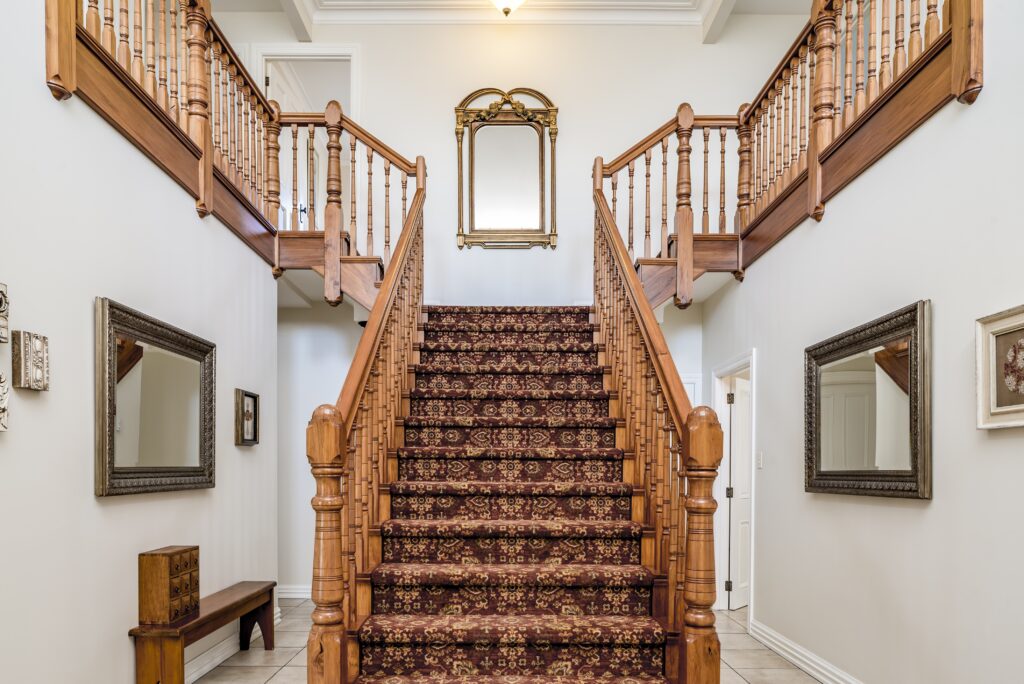
Popular Wainscoting Styles for Staircases
From classic to contemporary, these stairway wainscoting styles cater to diverse tastes:
- Beadboard Paneling: Rustic charm perfect for cottage or farmhouse aesthetics.
- Raised Panel Wainscoting: Timeless elegance is ideal for traditional homes.
- Flat Panel Design: Minimalist and modern, great for small spaces.
- Board-and-Batten: Vertical lines add height and drama to narrow stairways.
- Stair Riser Wainscoting: Focuses on individual stair steps for a cohesive look.
Materials for Wainscoting Stairs
Choosing the right wainscoting materials for stairs ensures durability and style:
- Wood: Classic and customizable (e.g., oak, pine).
- MDF: Affordable, paintable, and resistant to warping.
- PVC: Waterproof and low-maintenance for humid areas.
- Plywood: Lightweight and budget-friendly for DIY projects.
How to Install Wainscoting on Stairs: A Step-by-Step Guide
For DIY stair wainscoting, follow these steps:
- Measure and Plan: Map out your staircase dimensions and panel layout.
- Prepare Walls: Clean surfaces and repair imperfections.
- Install Backing Boards: Secure plywood or MDF as a base layer.
- Attach Panels and Molding: Use nails/adhesive for panels, then add decorative trim.
- Fill Gaps and Paint: Caulk seams and apply primer/paint for a polished finish.
Note: Angled stair walls require precise cuts considering laser levels or templates.
Cost of Wainscoting Stairs
The cost of wainscoting stairs varies based on materials and labor:
- DIY: 200–800 (materials only).
- Professional Installation: 1,500–4,000+ (includes labor and high-end materials).
- Budget Hack: Use plywood and paint for a high-impact, low-cost staircase upgrade idea.
Wainscoting Stairs vs. Wallpaper: Which Is Better?
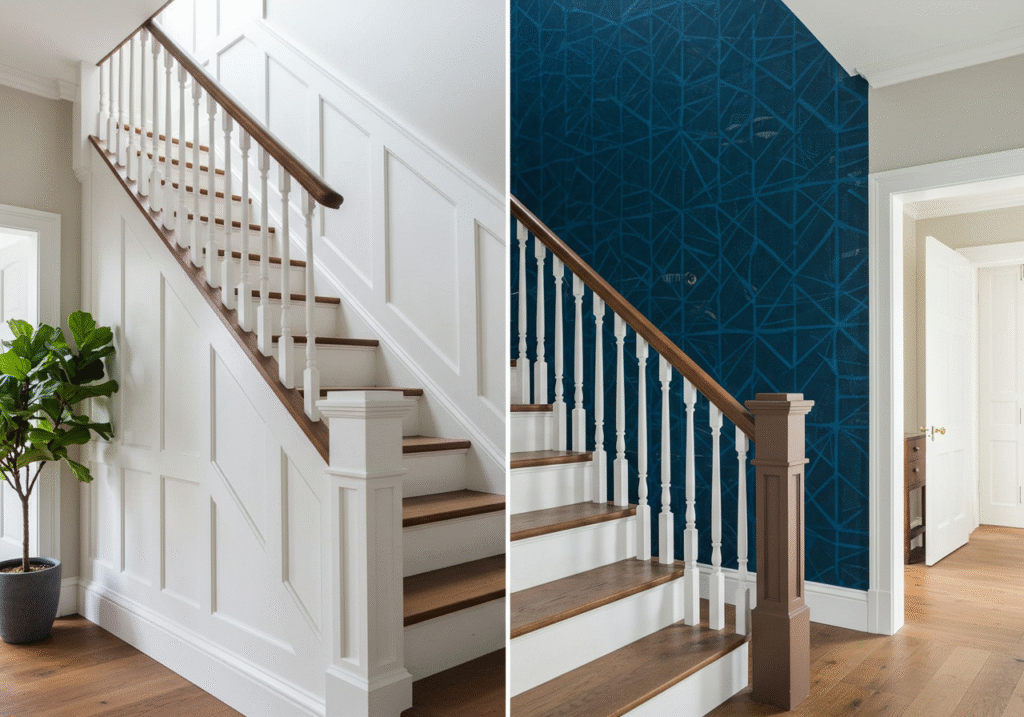
- Wainscoting: Durable, tactile, and ideal for high-traffic areas.
- Wallpaper: Quick to install and budget-friendly, but less protective.
- Design Win: Combine both! Use wainscoting on the lower half and wallpaper above for contrast.
2025 Trends in Staircase Wainscoting
Stay ahead with these staircase wainscoting trends 2025:
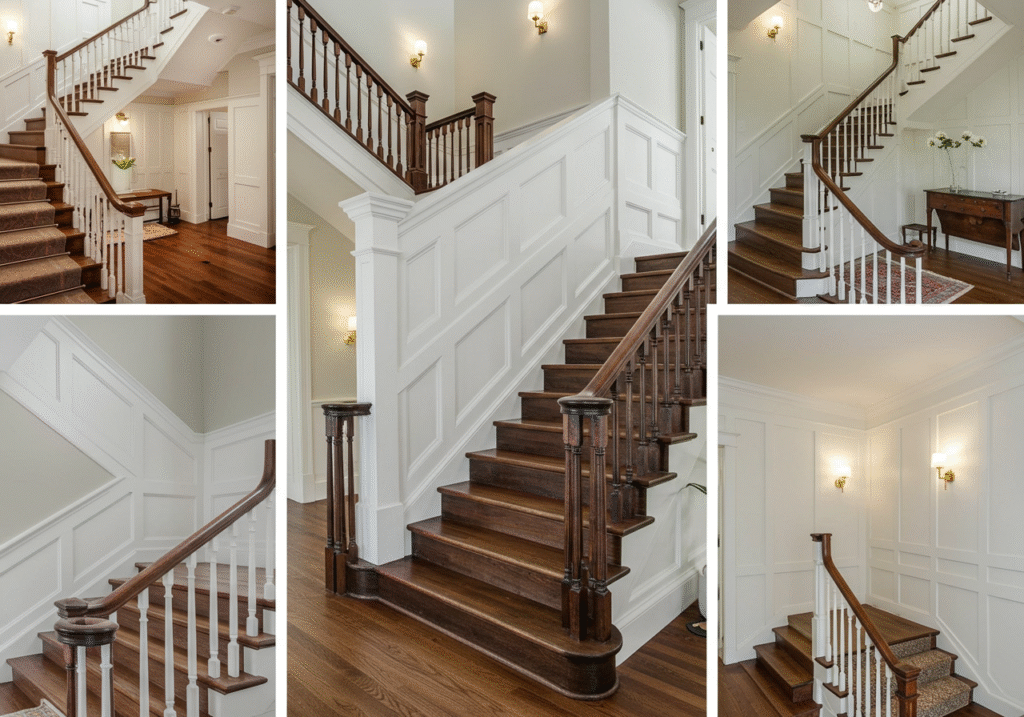
- Mixed Materials: Wood panels paired with metal accents or textured tiles.
- Eco-Friendly Options: Reclaimed wood or sustainable composites.
- Bold Colors: Deep greens, navy blues, or matte black for drama.
- Floating Wainscoting: Panels installed without baseboards for a streamlined look.
Wainscoting for Small Stair Spaces
Maximize tight areas with:
- Vertical Paneling to create height illusions.
- Light Colors like soft gray or cream, to brighten the space.
- Thin Molding to keep the design subtle yet stylish.
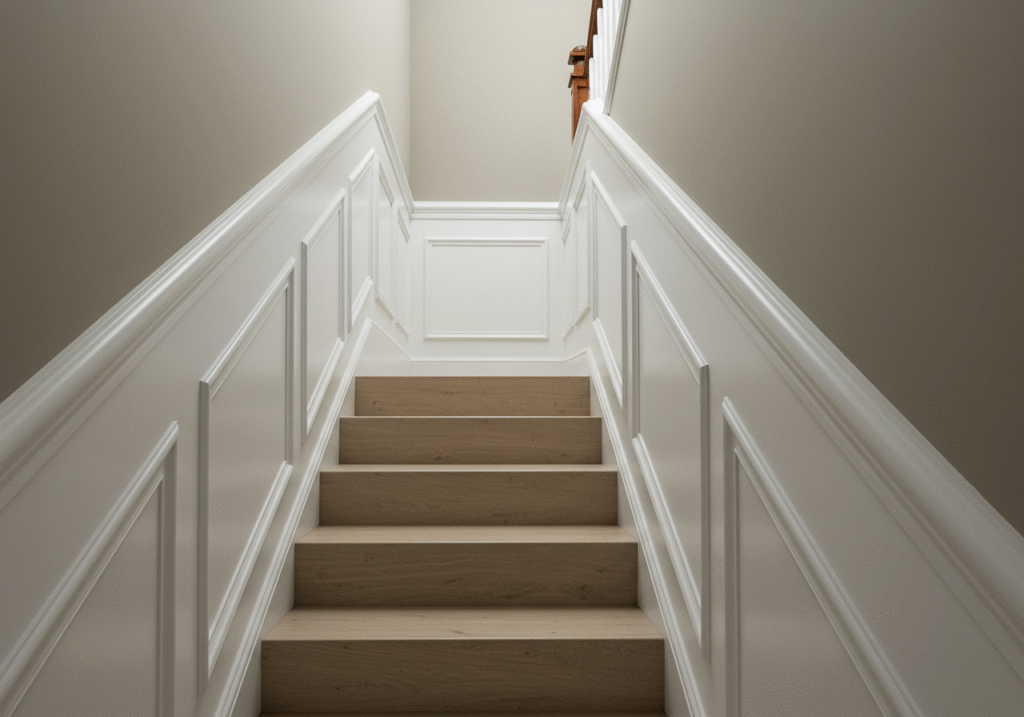
Maintenance Tips
- Dust regularly and clean with a damp cloth.
- Touch up paint chips promptly to prevent moisture damage.
- Avoid harsh chemicals on wood or MDF surfaces.
Conclusion:
Wainscoting stairs is a transformative staircase renovation idea that blends practicality with artistry, perfect for elevating banister basement stairs from purely functional to stylishly cohesive. Whether you opt for a DIY stair wainscoting project to refresh your basement stairs or collaborate with a pro, the result will be a stairway—or banister—that feels luxurious and intentional. Ready to explore wainscoting stairs before and after inspirations, including dramatic basement transformations?
FAQs:
What is the purpose of wainscoting?
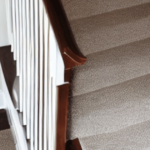
Wainscoting serves both aesthetic and practical purposes. Aesthetically, it adds a touch of elegance to interior spaces, enhancing the visual appeal of walls and creating a sense of refinement. It acts as a protective layer, preventing walls from wear and tear, especially in high-traffic areas like staircases.
What is the wainscoting technique?
The wainscoting technique involves installing decorative panels on the lower part of interior walls. These panels, known as wainscoting, can come in various materials, styles, and designs. Standard techniques include applying bead board, raised paneling, or board-and-batten to create visually appealing, textured surfaces.
What style is wainscoting?
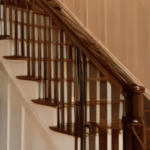
Wainscoting is a versatile design element that can adapt to various styles. It can be traditional, with classic wood paneling, or modern, incorporating sleek lines and minimalist designs. Wainscoting style depends on the chosen materials, panel patterns, and overall design preferences.
Where is wainscoting used?
Wainscoting is used in various interior spaces, including but not limited to living rooms, dining areas, hallways, and staircases. It is often employed in areas prone to impact or wear, providing aesthetic enhancement and practical wall protection.
How to install wainscoting on stairs?
Measure and mark the desired height for the wainscoting. Next, prepare the panels by cutting them to size and ensuring a proper fit. Attach the panels to the staircase walls using construction adhesive and nails. Finish by caulking gaps and painting or staining the wainscoting for a polished look.
How do you fit wall paneling on stairs?
Fitting wall paneling on stairs follows a similar process to wainscoting installation. Measure and cut the panels to the desired dimensions, ensuring a snug fit. Attach the panels using suitable adhesive or nails, starting from the bottom and working upwards.

